Japan Eats, Part IV: Ima in Kyoto
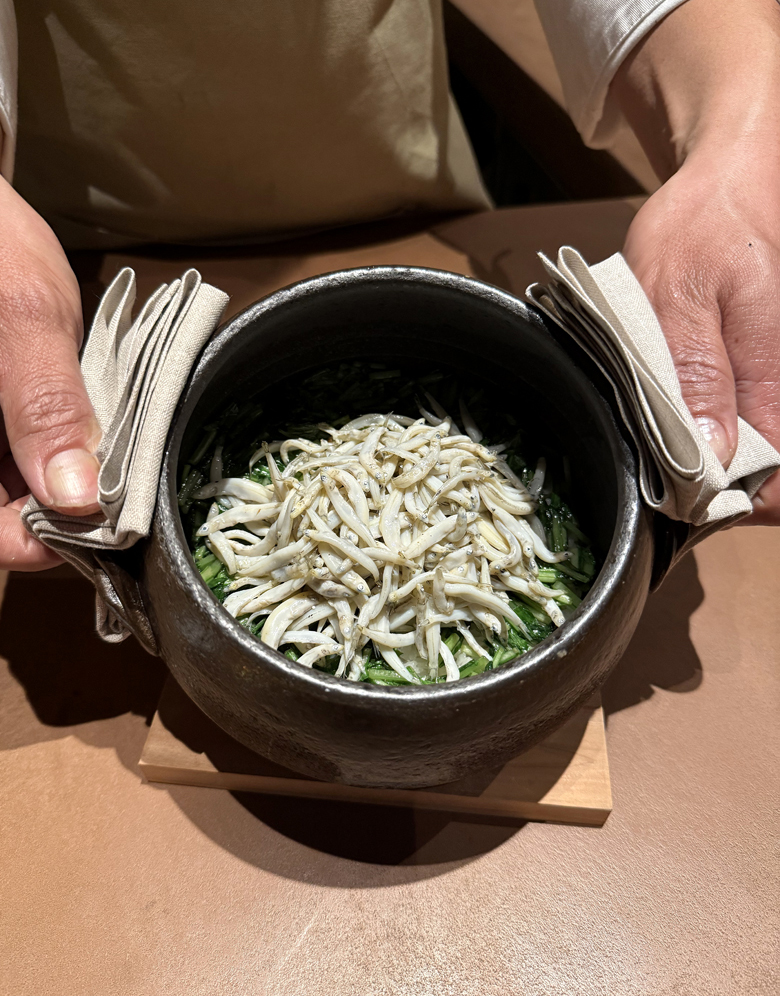
Kyoto, JAPAN — In Japanese, Ima means “living room.”
If only my own living room in the Bay Area were filled with the relaxing fragrance of cedar, the warmth of a crackling fire, and such tantalizing aromas as this one.
Tucked away on a quiet street that once housed kimono shops, this newcomer opened barely two months ago in a renovated 110-year-old townhouse.
With a small team of three, it is overseen by Chef Kiichi Imai, who trained at Michelin-starred Hotel de Yoshino in Wakayama, before going to work in several Tokyo restaurants. He later worked on the opening team for Michelin-starred Txispa, a wood-fire restaurant in Spain, before returning to Japan to cook most recently at Noma Kyoto.

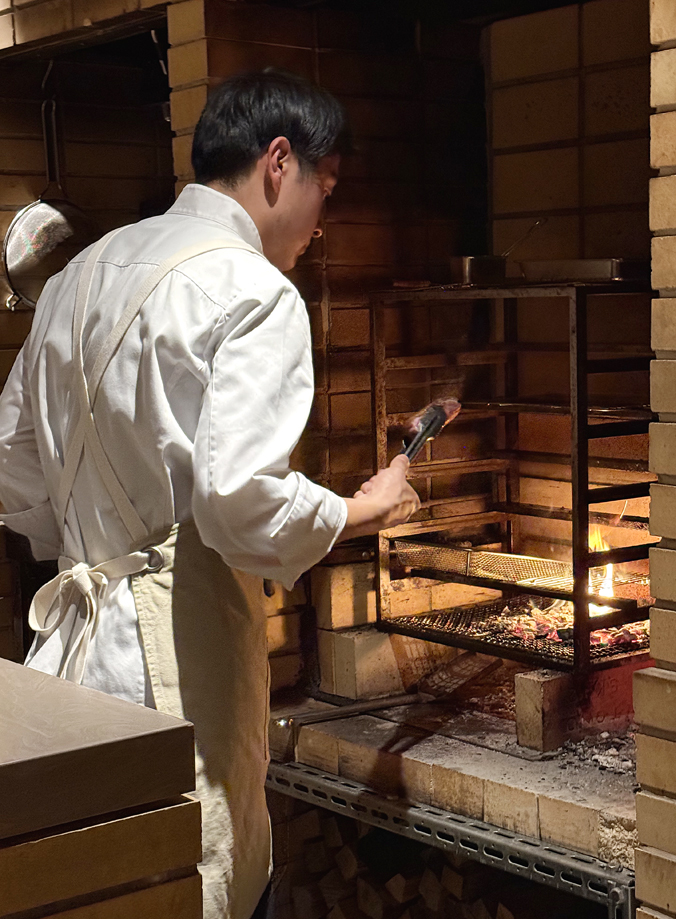
One of the restaurant’s investors will surely be familiar to anyone with a sweet tooth in the Bay Area: Charles Chen, founder of Basuku Cheesecakes.
Ima is all of 10 seats at the counter, which affords a clear view of the live-fire grill fed with oak firewood from Miyami forest in Kyoto. From start to finish, the hearth plays a major role in the dishes, blending Japanese and French influences that meld with sure-handed searing and charring.
Even the menu is smudged with artful burn marks.
Each evening, one 10-course tasting menu is available for about $113 U.S. An optional wine pairing is about $57 U.S. (seven glasses), and an optional non-alcoholic pairing is about $32 U.S. (5 glasses). I actually opted for the non-alcoholic pairing because the beverages sounded so creative.
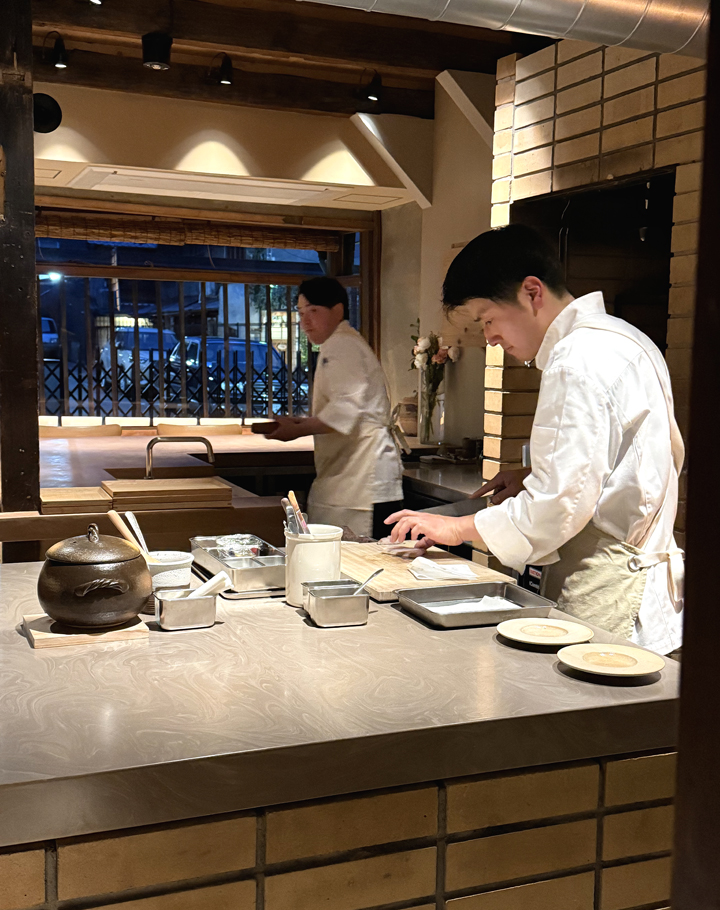
Deep emerald-hued cups of asparagus juice and Kyoto spring water welcome you to the restaurant, which with its exposed pipes overhead and plentiful light-colored wood all around, sets the mood with a mix of time-worn and au courant.
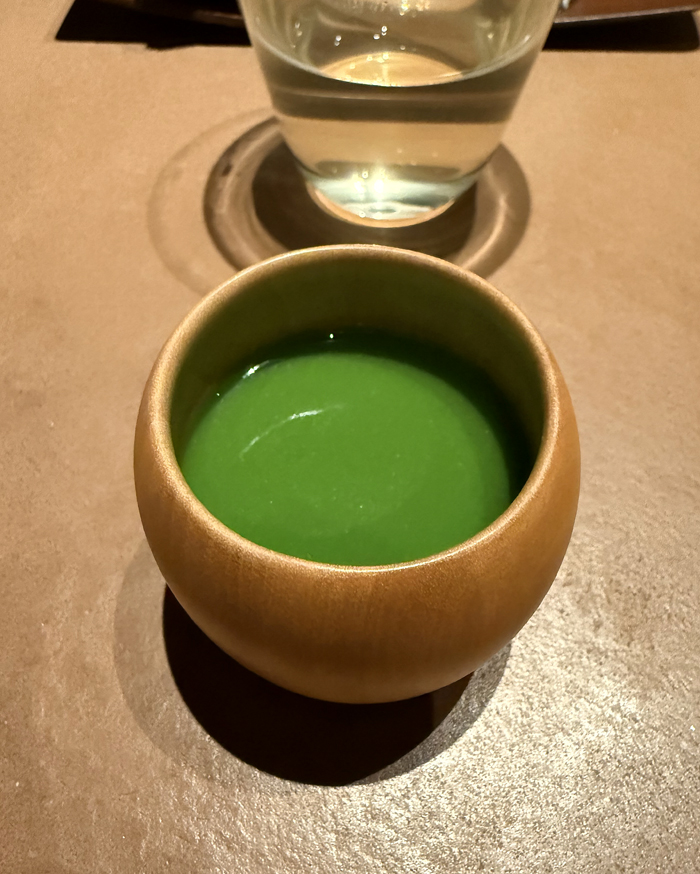
The plating here is precise with nothing extraneous, as exhibited by the first dish, oily, rich beltfish with its skin expertly scored to render it crispy and garnished with pureed fennel that added a subtle kiss of anise. To sip alongside, there was a refreshing coconut water drink brightened with shiso, and deepened with a touch of brininess from olive juice.
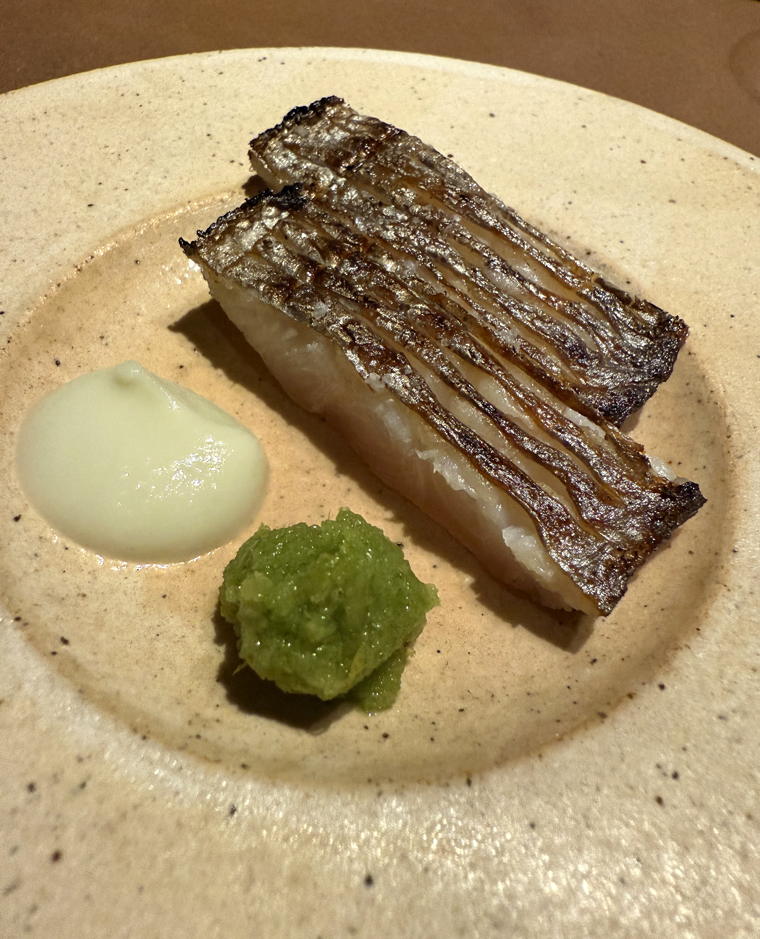
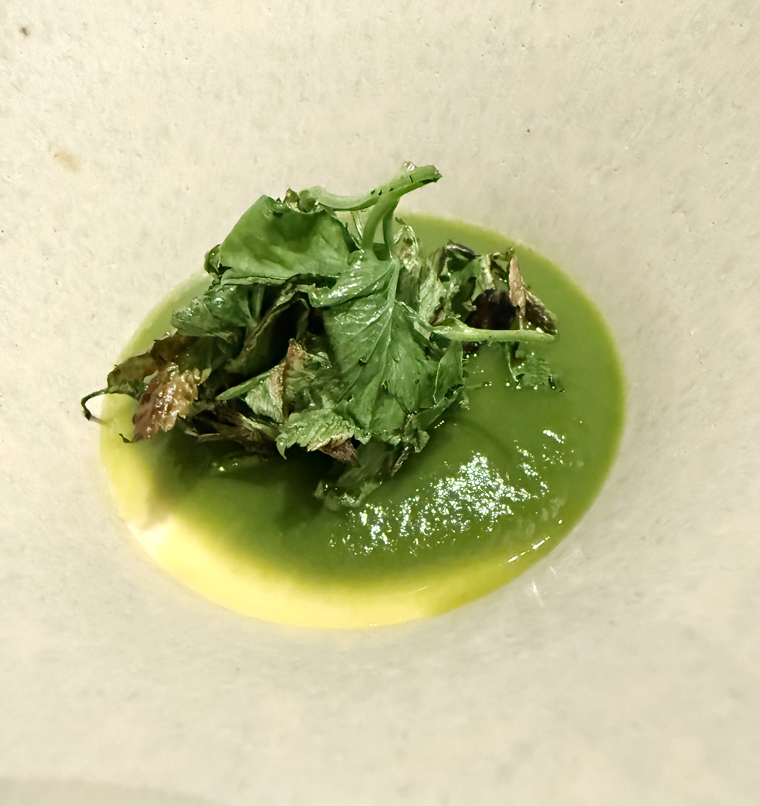
An alabaster plate arrives next with a small divot in the center that caresses a warm chawanmushi. Silky and quivering, the soft egg custard gains nuttiness from cauliflower puree and pepperiness from Japanese parsley. Cooked over the fire, it has a mellow smokiness that adds greater depth.
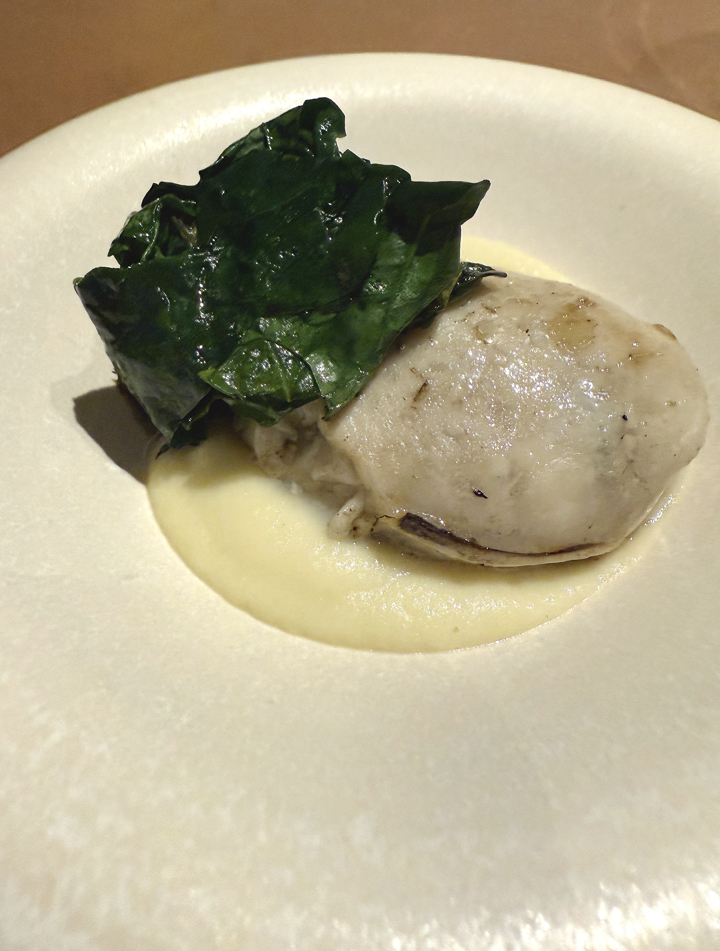
Hailing from Hiroshima, Chef Imai loves to feature oysters from his native prefecture. Fortunately for us, we enjoyed the last ones before the season ended that week. Large and plump, the oyster was sweet, succulent, and again, with just the right amount of smoke that played well with the sweet leek puree and minerality of spinach leaves. It was paired with a sparkling beverage with the musky, citrusy taste of preserved lemon and wine-y note of Hiuma apple.
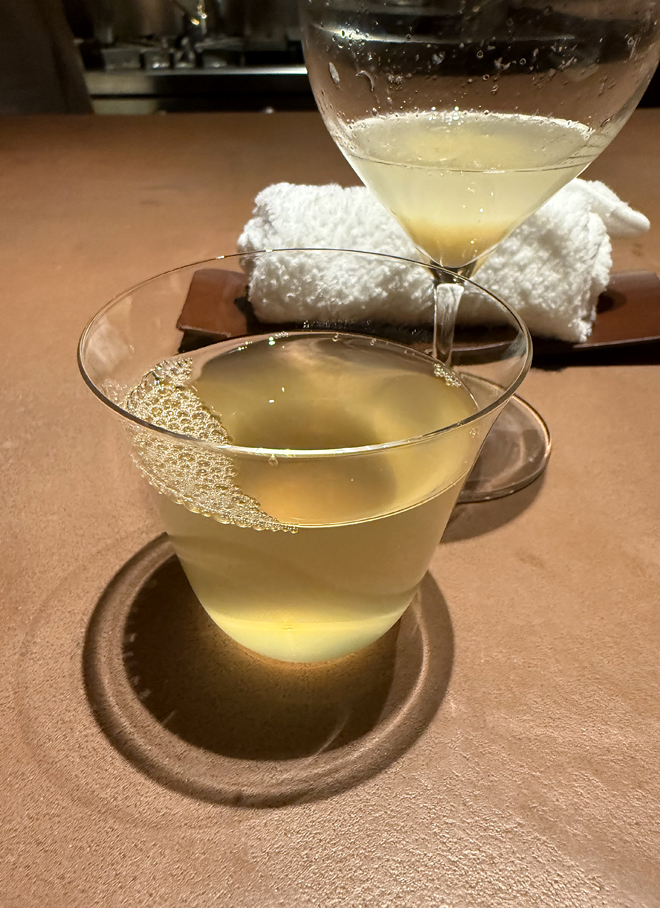
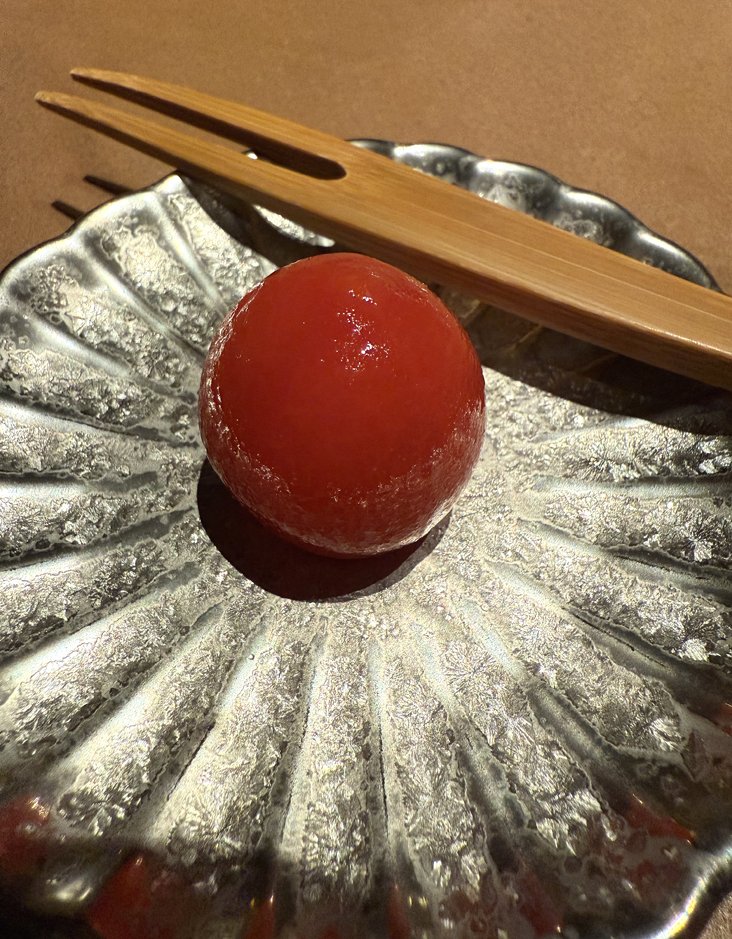
For a tomato lover like myself, the next treats were pure nirvana. First, a clear drink made from tomato water and koji water (made with the fermented grain) that tasted like the perfect summer tomato sprinkled with a little salt. It was followed by a single chilled fermented cherry tomato. Plop the whole thing in your mouth and it’s an explosive gush of umami, tanginess, and sweetness that just goes on an on.
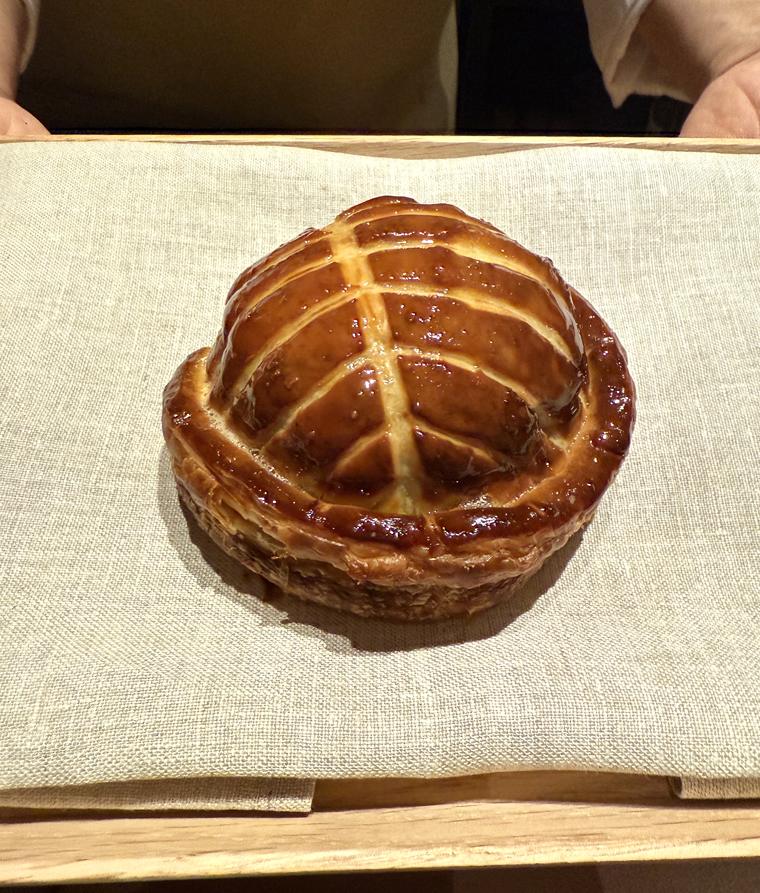
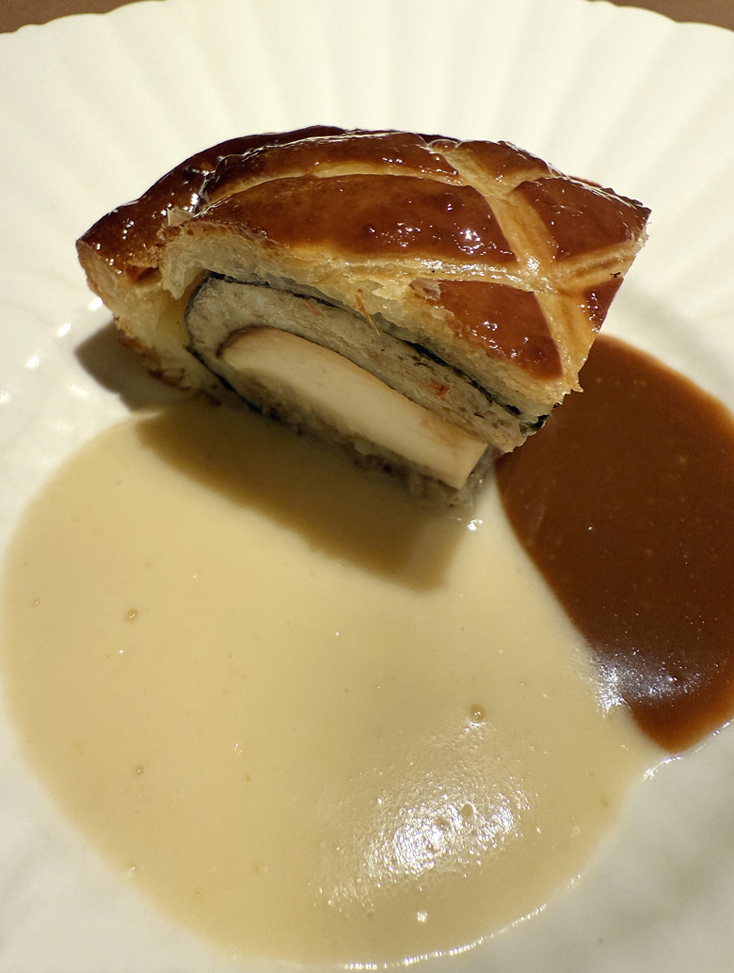
The chef presents a shiny pithivier in all its glory before plating slices of it. The shiny, mahogany pastry pie is so flaky that I almost wish he could make me a croissant, too, because I know it would be equally impressive as the buttery slice before me with a filling of shiitake stuffed with shrimp mousse. A shrimp sauce made from the heads of the shellfish, a rich buerre blanc and Japanese mushroom oil amplify the earthy and oceanic flavors of this dish.
Looking almost looks like crisped chicken skin, kinmedai flashes skin that’s as crunchy as the best potato chip. It’s finished with a concentrated seafood sauce, as well as Brussels sprouts with a fermented sunchoke sauce.
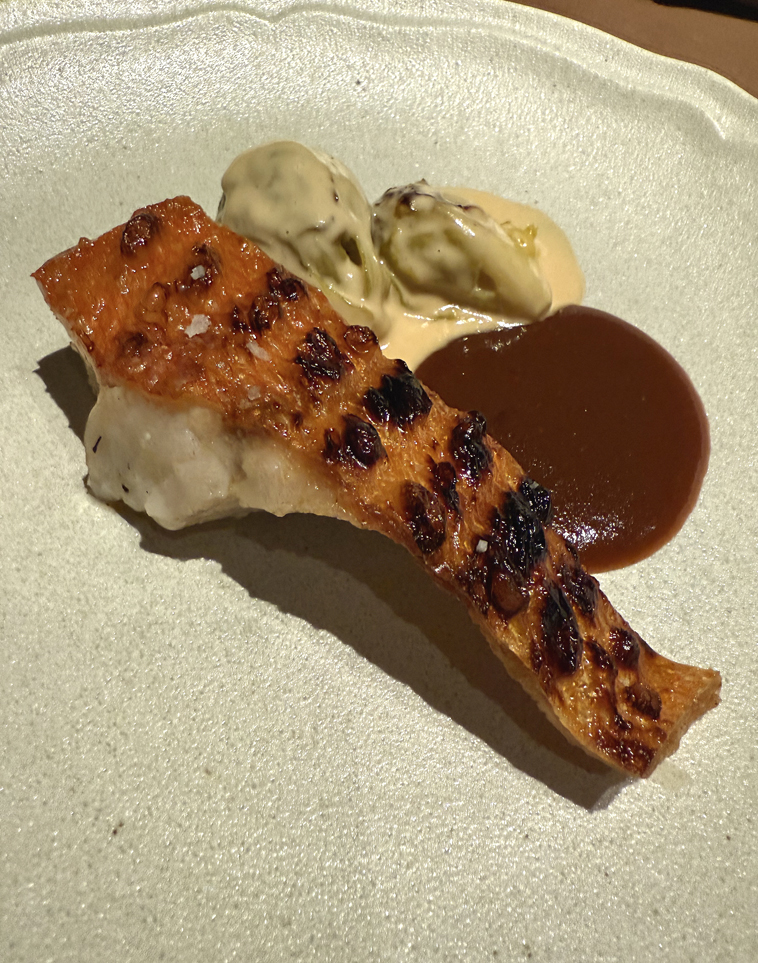

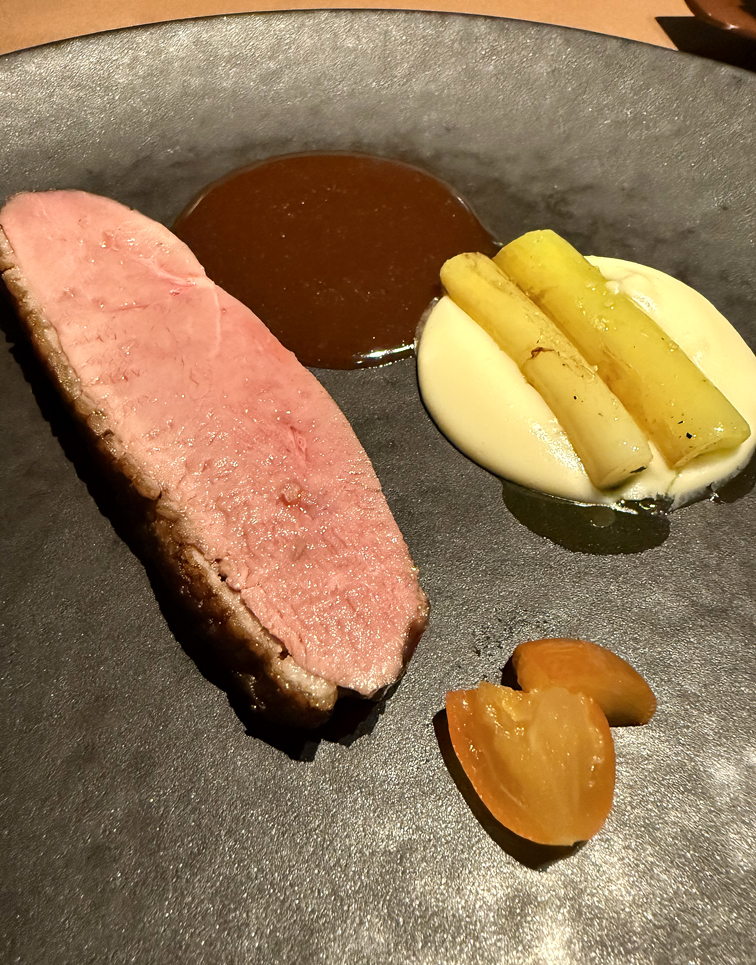
A beverage of grape, blueberry, tonic, and smoky Iribancha tea that resembles fizzy red wine sets the stage for the next dish with its smoldering campfire-like note. It’s juicy Kyoto duck, with concentrated poultry flavor that I assume that it’s been dry-aged, but it hasn’t been. I guess Kyoto ducks just naturally taste more robust than standard American ones.

Chef Imai brings over an earthen pot that had been bubbling away on the stove. He lifts the lid to reveal steamed Kyoto rice covered with icefish, tiny, almost transparent-looking fish.
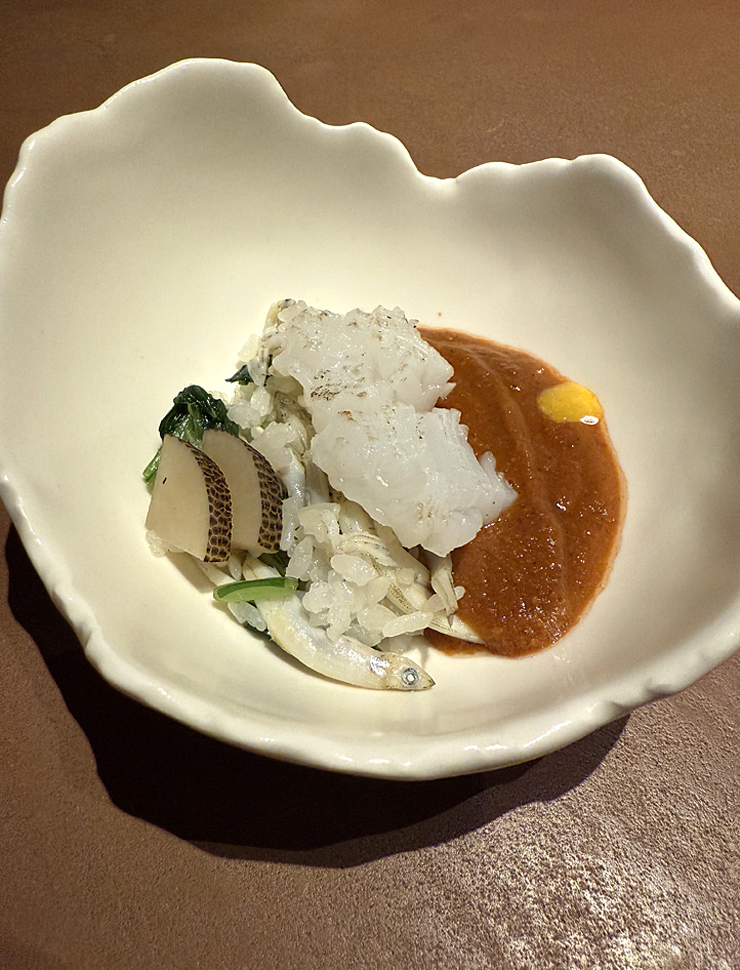
The rice is served in bowls with squid, radish pickles, garlic mayonnaise, and a spicy tomato-seafood sauce. You’re told to mix everything up before taking a bite.
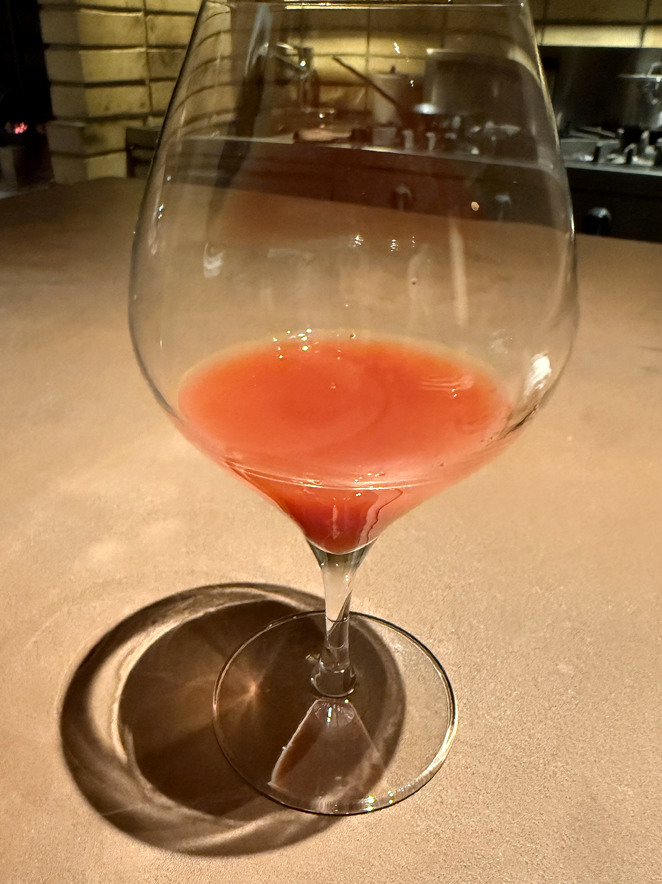
Savory and tomato-forward, the effect is almost Spanish-like, reminiscent of paella. You can have seconds, too, which my husband happily does, as I sip my beverage of Kintoki carrot, hassaku (a Japanese cross between a pomelo and mandarin), and roasty-toasty oolong tea.
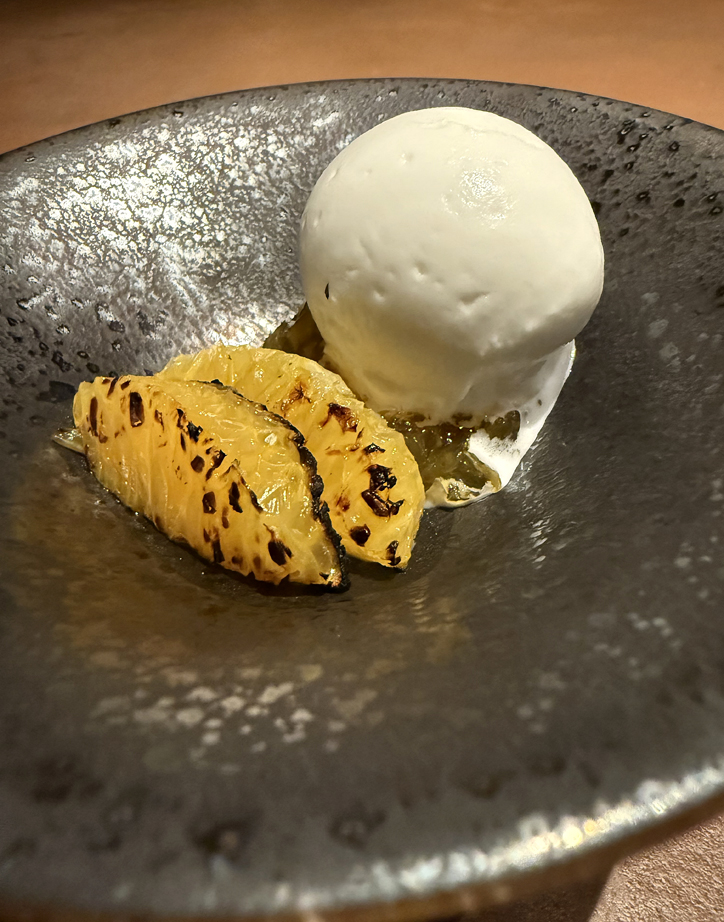
Then, it’s on to dessert, which includes ice cream that I heard spun only moments ago on a Pacojet. But not just any ice cream, but one where binchotan was placed in Kyoto milk to infuse it. What it does is nothing short of amazing, too. Fire-wood ice cream, as it’s called, tastes exactly like how it sounds — smooth, creamy, ever so milky sweet, and a bit smoky. It’s served with charred segments of hassaku, making for a palate-cleansing bridge to the next dessert.
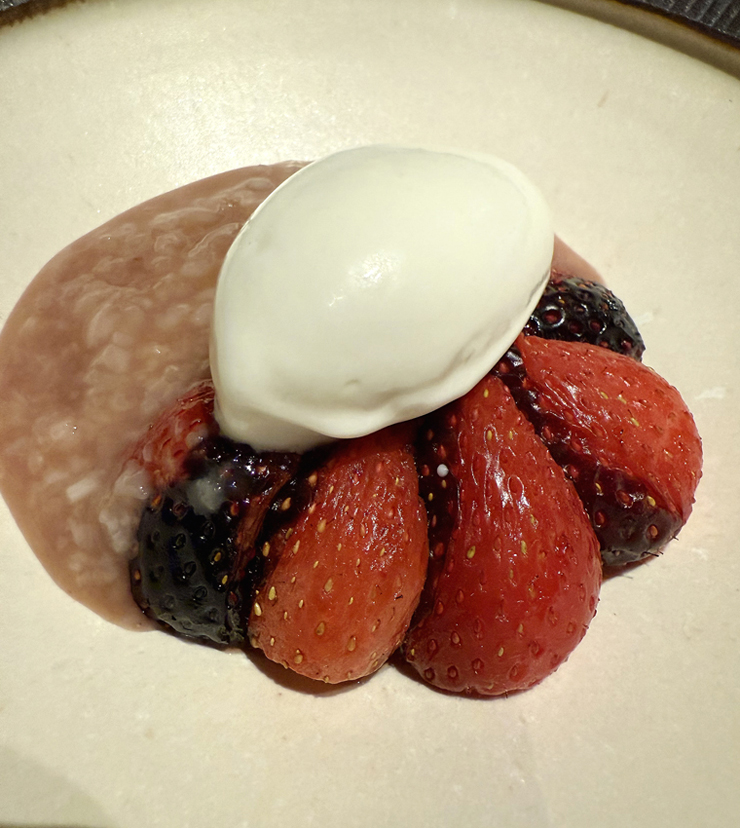
This one is also built around ice cream, this time a floral jasmine one rich with cream cheese so it tastes like cheese cake. It’s surrounded by juicy, charred Kyoto strawberries and a pool of strawberry-infused amazake that’s like a sweet fermented rice pudding. What’s underneath, though, is the real surprise: crunchy, crumbled cookies flavored with shichimi that provide a sneaky burst of heat.
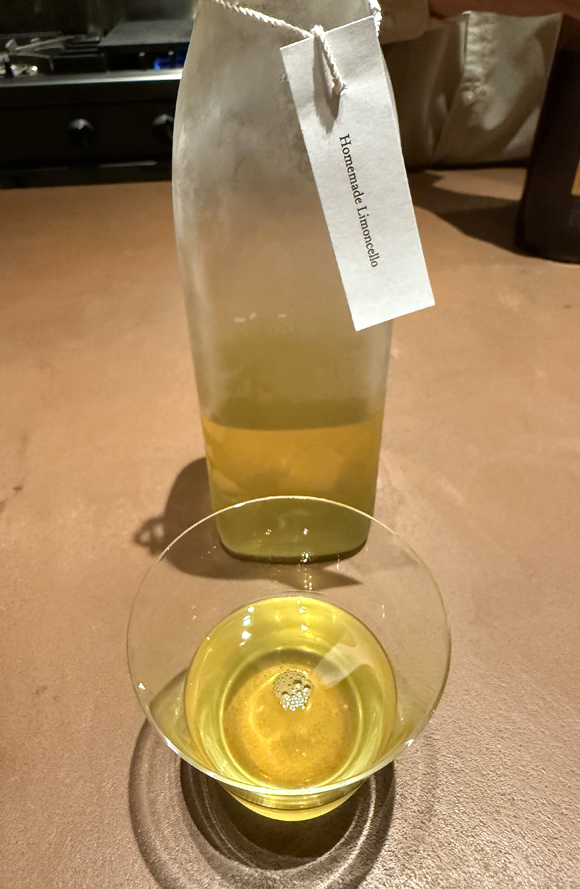
It’s served with the chef’s own house-made limoncello that really packs a rush of lemon plus a boozy wallop.
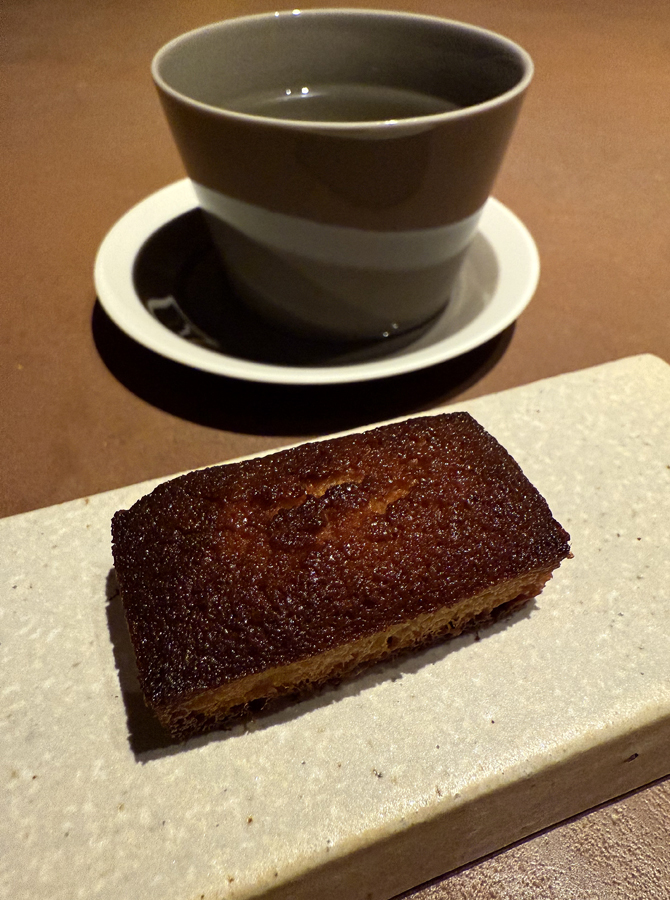
Lastly, there are cups of hot lemongrass tea and a tiny white miso confection, a cross between a cookie and a cake, that has a deeply caramelized sugary top, making it both sweet and savory.
As you lean back, you realize that this tranquil journey is coming to an end, leaving you far calmer and far more gratified than when it began.
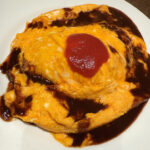
More: Japan Eats, Part III: Yoshoku Izumi
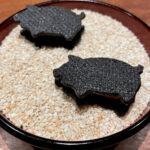
And: Japan Eats, Part II: Michelin-Starred Koke
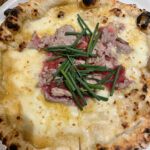

A most remarkable meal. One of our very best in Japan.
Hi Lynn: I’m so glad you’re a fan of Ima, too. It’s such a special place. I hope more people discover it.